
Kód: 16068492
FRE-REVUE INTERNATIONALE DHIST
Autor Klincksieck
Marco Bonechi – Strife in Early Bronze Syria. Lexical, prosopographical, and historical notes on the Ebla texts (p. 17-54).The article focuses on the military personnel qualified as àga-ús and zag-ús in the third millennium BCE. E ... celý popis
- Jazyk:
 Francouzština
Francouzština - Vazba: Brožovaná
- Počet stran: 320
Nakladatelství: KLINCKSIECK, 2017
- Více informací o knize

Mohlo by se vám také líbit
Dárkový poukaz: Radost zaručena
- Darujte poukaz v libovolné hodnotě a my se postaráme o zbytek.
- Poukaz se vztahuje na celou naši nabídku.
- Elektronický poukaz vytisknete z e-mailu a můžete ihned darovat.
- Platnost poukazu je 12 měsíců od data vystavení.
Více informací o knize FRE-REVUE INTERNATIONALE DHIST
Nákupem získáte 62 bodů
 Anotace knihy
Anotace knihy
Marco Bonechi – Strife in Early Bronze Syria. Lexical, prosopographical, and historical notes on the Ebla texts (p. 17-54).The article focuses on the military personnel qualified as àga-ús and zag-ús in the third millennium BCE. Ebla cuneiform texts. It includes a lexical discussion, a prosopographical analysis and a survey of the historical contexts, leading to some conjectures on events of the last years of Ebla.Bertrand Lafont – New data on the military organization of the kings of Ur from the archives of Garšana and Irisagrig (p. 55-67).In 2008, it was proposed a synthetical article on the textual evidence for the military institutions of the Neo-Sumerian period (ca. 2100-2000 BC.). It can now be supplemented by some unpublished information provided by two large batches of Sumerian archival texts recently brought to the attention of historians interested in that period. These are the Garšana archives on the one hand, where a large royal garrison was located in the heart of the kingdom, and the Irisagrig archives in the second hand, a site where the kings of Ur often seem to have resided, together with a large number of their generals and soldiers. It is now proposed a quick overview of some new information that can be drawn from these new archival data.Philippe Abrahami – Aspects of warfare in the divinatory texts of Mesopotamia (p. 69-85).The present paper considers the divinatory texts (oracular questions, collections of oracles) and the report sent to the king by the diviners in the Mari letters. Based on this documentation, it focuses on some aspects of warfare such as the monitoring of military operations on a large scale as well as the process of siege warfare. Other issues which are addressed in the scope of the present study deal with the arrangement of units in the course of pitched battles and the oracular treatment related to the engagement of allied troops.Pierre Villard – Some Aspects of the Military Intelligence in the Neo-Assyrian Empire (p. 87-97).One of the main strengths of the Assyrian army layed in the efficiency of the military intelligence. In the absence of an autonomous department, the army had a body of specialized servicemen, the daiālu, acting sometimes as scouts preceding the main part of the troop and sometimes as spies asked to make missions of infiltration on enemy territory. They operated frequently from small forts established along sensitive borders, as the northern mountains or Arab-Syrian desert. The documentation also shows that they were very active in vassal States, where they reported their activities to the qēpu appointed by the Assyrian king. Besides, the help brought to notables of nearby countries plotting against the ruling powers offered another precious information source, sometimes authorizing operations of destabilization and disinformation.Philippe Clancier – War in the Suhu area during the Neo-Assyrian period (p. 99-114).The Sūhu, in the Middle Euphrates area, from Hindānu to Rapiqu, was during the 9th and 8th centuries claimed by the Assyrian kings as being part of their dominion. However, even if Sūhu was at times tributary of Aššur, at least one state maintained itself until Teglat-pileser III. From at least 878 onwards, Sūhu was divided between two main areas, one in the west from Hindānu to Ānat, the other up to Babylonia. This small state was led by monarchs bearing the title of šaknu, i.e. "governors", most probably inherited from the Medio-Assyrian period. The šaknus developed a military system able to protect their state from foreign aggressions, like raids led by Aramean tribes. To do so, they built an army around a palatial core. In case of major risk, this army was supplemented by levees of part of the population. To ensure control of both the river banks and the desert roads, the šaknus built or maintained fortress where specific troops were garrisoned. It is, for instance, the case of the cavalry units based in the forts guarding the wells, the ablest soldiers to patrol the desert.Rocío Da Riva – The Empire at war. Considerations on the military aspect of the Neo-Babylonian dynasty: the site of Nahr el-Kalb in Lebanon (p. 115-122). Few stages of ancient Mesopotamian history are so dominated by the vicissitudes of war as the period of the Neo-Babylonian Empire (626-539 BCE). This empire emerged as the result of military victory over Assyria, and disappeared in the wake of defeat by Persia. Military enterprises were a constant feature of the empire's 88-year history, and were a very important factor in the transformation of the economy. But the importance of war stretched beyond the economic sphere. Among the best-documented episodes of the military history of the period were the Neo-Babylonian campaigns in Syria and the Levant, which began with Nebuchadnezzar II. Lebanon, due to its geographical position and its contacts with the major powers, occupied a key strategic position in the Near East. The Neo-Babylonian kings continued the military policy of their Assyrian predecessors in the area, and the most impressive evidence of their activities is provided by the memorials in Lebanon, especially at the site of Nahr el-Kalb.Jordi Vidal – Military conscription in Ugarit (p. 123-133).The aim of this article is to analyse military conscriptions in Ugaritian villages as documented in the texts from Ras Shamra and Ras Ibn Hani. The study carried out confirms that 1/ most of the militia came from the largest villages of the kingdom 2/ the maximum men that could be recruited was around 2,000-3,000 men, and 3/ the militia was actively involved in the military conflicts of the 1200 BCE crisis.Bruno Gombert – Recruitement and mobilization of armed forces in Babylonia from the 6th century BC. to the 4th century BC. (p. 135-150).Babylonian chronicles which briefly describe military campaigns launched by Neo Babylonian Kings in order made possible the execution of their imperial project, give very few details about certain aspects of the running of the army. However, they mention a key point of departure in expedition: the mobilization of troops. The economical documentation produced in Babylonia during both Neo Babylonian and Persian periods allows us to increase our understanding of this moment. Indeed, through private of Babylonian business man and temple archives, we can see what are the legal basis of the recruitment, how the various recruitment elements are employed to fill the ranks of Neo Babylonian army, and later the Persian one, who are the officers in charge of the levy, how the mobilization order is spreading, … Moreover, the analysis of functioning of the mobilization help us to draw a partial picture of the Neo Babylonian army’s composition and structure.Guillaume Gernez – History of tripartite spearheads in the Ancient Near East (4th-2nd millennium BCE) (p. 151-180).Tripartite spearheads are among the most ancient metal weapons designed in the Near East, in the 4th millennium BCE. It is also the most widespread type until the beginning of the 2nd millennium BCE, adopted in Sumer and its neighboring regions. From 405 archaeological items discovered in hoards and graves, the proposed typology distinguishes five main groups, each one including several variants. It is now possible to reconstruct the history of tripartite spearheads on two millennia, and to observe how this model, invented in Eastern Anatolia and the Caucasus, was transmitted and transformed over time in the Southern Levant and Mesopotamia, and why he had morphological elaborations: the three main factors are linked to function, technique and culture. Fabrice De Backer – The Neo-Assyrian Lion-Headed Shields (p. 181-198). The close examination of the material, visual and textual evidence shows that the Neo-Assyrian weaponry and their combat tactics clearly changed, at the latest under Ashurnasirpal II. Until the reign of this king, concentrations or archers and heavy phalanx of pikemen or spearmen mostly composed the core of the neighbouring ancient near eastern armies, following a chariotry provided by the nobles and the wealthiest. The IX century BC saw the apparition of élite warriors wielding different variations of a small circular shield with the protom of a lion head, spikes, or both of them, of whose depiction is found until the Persian period.Jaume Llop – The weaponry of the middle Assyrian army according to the written sources (p. 199-121). The present study discusses, the defensive and offensive weapons used by the Middle Assyrian warrior. The information proceeds mainly from the archival documentation. The defensive weapons were the helmet (qurpisu) or hat (kubšu), armour (*sariu) and the shield (arittu). The offensive weapons can be divided into those used for close combat and weapons for distance combat. The close combat weapons are the stick (haṭṭu), the whip (maḫittu), possibly the mace (kakku), the dagger or sword (patru), various types of axes (ḫaṣṣinnu, pāšu, *pāltu and ulmu) and the lance. Weapons for long range combat were the spear, the bow and arrows and the sling, used to throw projectiles.Laura Battini – Mesopotamian city gates: military dynamic and other uses (p. 223-247). The architectural analysis of gates demonstrates the existence of construction’s elements determined by military reasons as well as others opposite to military reasons or not easily explained by them. Two kinds of gates were constructed during the three millennia of Mesopotamian history: one more expensive (pier gate), one simpler (“way” gate), each having specific advantages. Number of gates was most due to urban necessity as well as ideological goals better than to military ones. But their location depends on military and civil aims. From written sources, gates appear to have been used as place of meetings, judgements, administrative and economic functions, markets and religious activities.Christine Proust – Did rampart builders need mathematics? Some clues from Old Babylonian mathematical texts (p. 249-276). Few mathematical texts refer explicitly to military-related tasks. A notable exception is a small group of tablets from Old Babylonian period, which probably from Sippar or its region. Calculating the slope of a ramp of a fortress, assessing the work required for digging ditches and building walls, expanding the walls of a circular city, such are for example the problems addressed in these tablets. Were these mathematical problems designed to solve real technical problems, or, conversely, was the construction of walls a source of inspiration for the mathematical imagination of scholars little involved, actually, in the realisation of this work? What was the relationship between academic circles and milieus which were in charge of the implementation of major military work? This paper aims to provide some answers to these questions by examining a range of issues drawn from this group of mathematical tablets. Particular attention is paid to details such as the types of tablets where texts are written, errors that can be detected, the indications on the orders of magnitude – or lack of them – and the presence and content of colophons.Alice Mouton – Hittite Rituals to Perform Before or After Battle (p. 277-288). Hittite healing rituals often deal with the defilement engendered by the encounter with corpses or even by a military defeat. Other rituals are more preventive in character and are designed to protect the warrior. Sometimes ceremonies occur at the same time as the battle, in another location. This paper will present and analyze all those rituals to be performed before, during or after the battle.Catherine Wolff – On some peculiarities about the Roman army (p. 289-299). The paper is about the levy in the Roman army: methods (they were not the same all the time, but the dilectus is always based on the notion of choice), identity of the levied men (besides the Roman citizens, Roman authorities levied Latin peoples and allies too, who became Roman citizens after the Social War, and soldiers given by the conquered and allied peoples and joined together in the auxiliaries troops during the Empire) and composition of the army. Augustus deeply changed the structures of this army: the army was a non-permanent and a non-professional one during the Republic, based on the census, and it became a permanent and a professional one, with three main bodies, the garrison at Rome, the army in the provinces and the marine. It is however always a conscription army. Because of all these elements, the Roman army is special compared with the others antique armies.
 Parametry knihy
Parametry knihy
Zařazení knihy Knihy ve francouzštině SCIENCES HUMAINES ET SOCIALES, LETTRES
618 Kč
- Plný název: FRE-REVUE INTERNATIONALE DHIST
- Autor: Klincksieck
- Jazyk:
 Francouzština
Francouzština - Vazba: Brožovaná
- Počet stran: 320
- EAN: 9782252040157
- ISBN: 2252040157
- ID: 16068492
- Nakladatelství: KLINCKSIECK
- Hmotnost: 492 g
- Rozměry: 238 × 157 × 15 mm
- Datum vydání: 03. January 2017
Oblíbené z jiného soudku
-

MATRI DARSHAN, UN ALBUM DE PHOTOS DE SHRI ANANDAMAYI MA
791 Kč -

FORGERONS ET ALCHIMISTES
125 Kč -

Le temps du paysage
473 Kč -

LE LIVRE FACE AU NUMERIQUE
952 Kč -

Un Moyen Âge grec
873 Kč -

EXPRESSION ORALE
661 Kč -

Dictionnaire des verbes du français actuel
694 Kč -
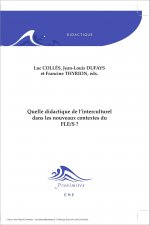
Quelle didactique de l'interculturel dans les nouveaux contextes du FLE/S ?
531 Kč -
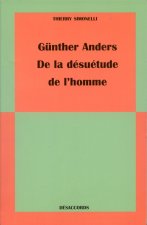
Günther Anders, de la désuétude de l'homme
386 Kč -
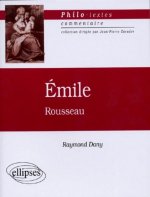
Rousseau, Émile
242 Kč -
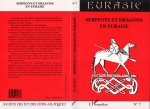
Serpents et dragons en Eurasie
820 Kč -
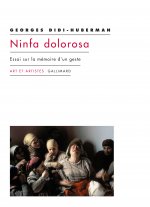
Ninfa dolorosa
906 Kč -
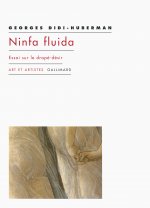
Ninfa fluida
748 Kč -

PENSER LA CULTURE AUTREMENT (FLE)
758 Kč -

Ninfa profunda
618 Kč -
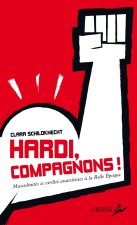
Hardi, compagnons ! - Masculinités, virilité, dominations de
373 Kč -

TECHOUVA
643 Kč -

A Citizen of Nowhere
5099 Kč -

Psychologie
479 Kč -
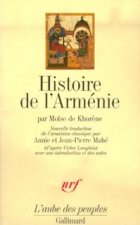
Histoire de l'Arménie
597 Kč -

LA PART DU COLIBRI
267 Kč -

La saga des intellectuels francais 2
906 Kč -

Lire le théâtre I
606 Kč -

Societe Feodale (La)
460 Kč -

La saga des intellectuels francais 1
906 Kč -
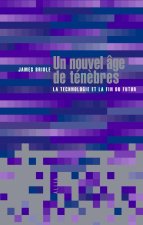
Un nouvel âge de ténèbres
529 Kč -

Former les professeurs de langues a l'interculturel
820 Kč -
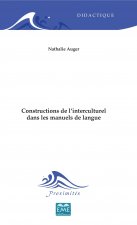
Constructions de l'interculturel dans les manuels de langue
849 Kč -

Les structures anthropologiques de l'imaginaire - 12e éd.
1105 Kč -

La Société du Spectacle
293 Kč -

L'anti oedipe capitalisme et schizophrénie 1
863 Kč -

Critique de la déraison pure - La faillite intellectuelle
769 Kč -

Le Charme discret de l'intestin
452 Kč -

Grammaire française de A à Z
719 Kč -

La raison ou les dieux
935 Kč -

Etre la vérité
444 Kč -

Gary, La vie devant soi
314 Kč -

Astrologie et vie affective
759 Kč -

Aion
825 Kč -

Indignez-vous!
198 Kč -

Grammaire du sens et de l'expression
1837 Kč -

La Psychanalyse
231 Kč -

Astrologie médicale et thérapies énergétiques
759 Kč -

Vercingétorix
761 Kč -

Idealisme moral et realisme politique
251 Kč -
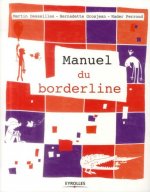
Le manuel du Borderline
791 Kč -

Miroir du nihilisme
531 Kč -

Économie libidinale
849 Kč -

Le règne de la quantité et les signes des temps
675 Kč
Osobní odběr Praha, Brno a 12903 dalších
Copyright ©2008-24 nejlevnejsi-knihy.cz Všechna práva vyhrazenaSoukromíCookies





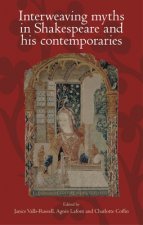
 Vrácení do měsíce
Vrácení do měsíce 571 999 099 (8-15.30h)
571 999 099 (8-15.30h)